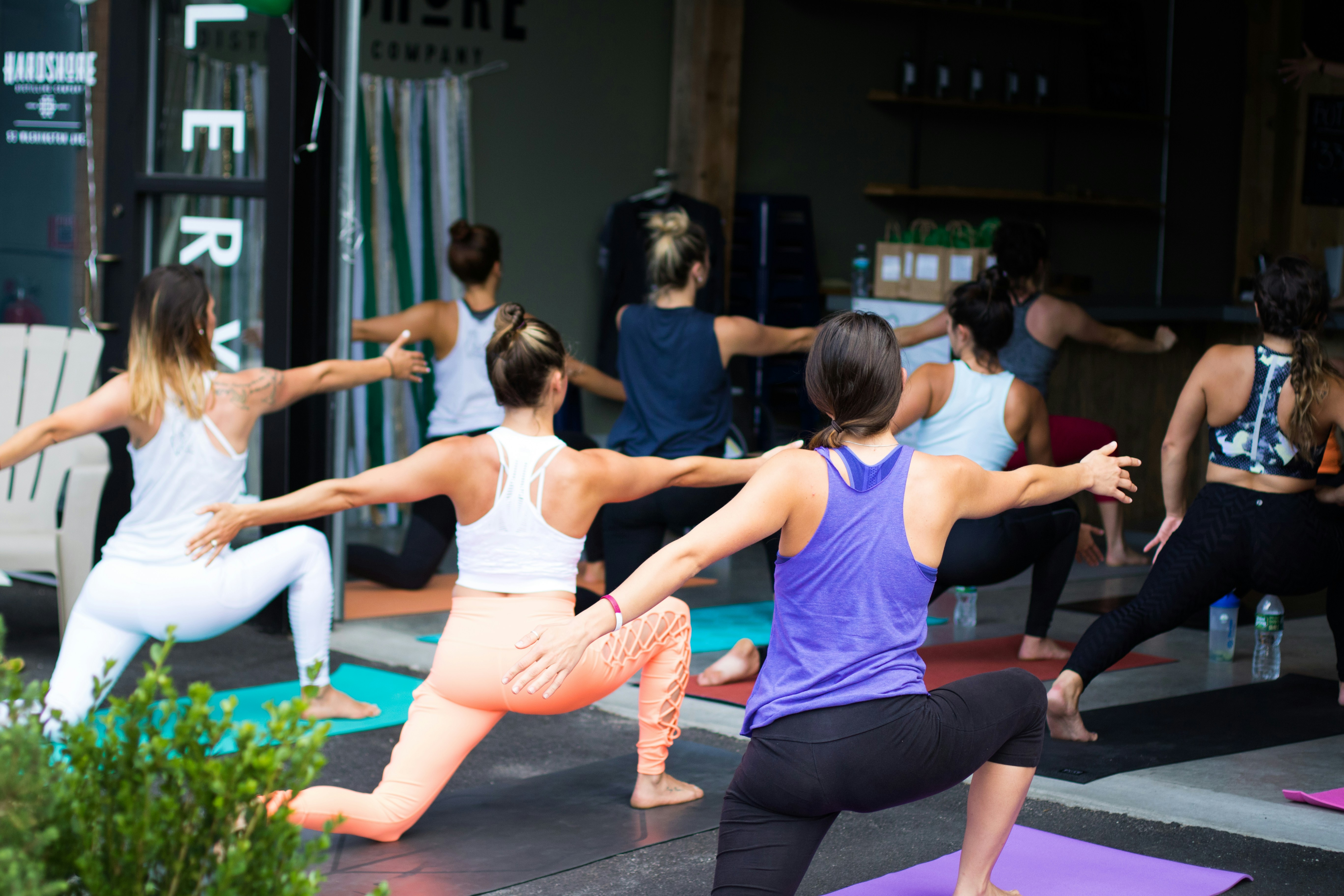
Local Fitness Meetups Foster Healthier Social Connections
Gathering with a neighborhood fitness group opens the door to meaningful connections while adding excitement to regular workouts. Meeting weekly for sunrise yoga in the park or coming together in a local gym parking lot for an energetic boot camp turns exercise into a lively social event. Shared activities like these help people bond over common interests, making it easier to stay motivated and committed to fitness goals. Regular meetups encourage participants to share advice, celebrate progress, and support one another, transforming each workout into an enjoyable group experience that goes beyond just physical activity.
Advertisement
Community gatherings around fitness also open doors to exploring different activities. You might discover a passion for trail running after tagging along with a hiking crew or find your rhythm in a group dance cardio class. Such variety prevents boredom, and sharing new experiences with friends makes every session feel fresh. By stepping out of your comfort zone alongside others, you build confidence and expand your social circle.
Advantages of Local Fitness Meetups
- Better Motivation: Exercising with friends encourages consistency and accountability.
- Social Connection: Regular meetups foster a sense of belonging and reduce stress.
- Accessible Resources: Members often share equipment, training tips, and venue information.
- Variety in Workouts: Group leaders introduce different routines, from HIIT to tai chi.
- Skill Development: Peer feedback helps refine techniques and prevent injuries.
Group exercise goes beyond physical gains. When you laugh through a tough circuit or swap healthy recipes afterward, you strengthen emotional bonds. These connections ease loneliness, making fitness sessions feel less like chores and more like friendly gatherings.
Popular Formats and Activities
- Outdoor Boot Camps: Small squads meet in parks or parking lots for circuits combining strength and cardio.
- Trail Running Clubs: Runners of all levels explore local paths, sharing pace-setting duties and safety tips.
- Yoga Circles: Meet under shady trees or on community center lawns to flow through asanas.
- Cycling Meetups: Urban riders and mountain bikers converge for guided routes and maintenance workshops.
- Dance Fitness Parties: Instructors lead fun choreography to upbeat playlists in community halls.
Each format brings a distinct vibe. Boot camps drive high energy and friendly competition, while yoga circles offer calm connection and mindfulness. Cycling groups combine the thrill of speed with technical advice, and dance sessions let participants express creativity. No matter your preference, there’s a team ready to welcome you.
Organizers often rotate leadership, giving members a chance to host sessions or propose new ideas. This shared responsibility keeps schedules varied and inclusive. Rotate roles could mean leading a beginner-friendly stretch routine one week and planning a challenging interval run the next.
Locate the Right Group Near You
- Check Local Forums: Visit community bulletin boards or neighborhood apps for event postings.
- Follow Social Media Pages: Search location-specific hashtags to spot nearby gatherings.
- Ask at Gyms and Studios: Instructors often collaborate with grassroots meetup organizers.
- Browse Event Platforms: Sites like *Meetup* and *Eventbrite* list fitness-focused outings.
- Attend Free Trials: Try different groups before committing to one that fits your energy and schedule.
When you evaluate options, consider group size, meeting frequency, and skill level. A smaller circle might offer personalized advice, while larger crews often plan more ambitious routes or projects. Think about whether you prefer early-morning workouts or evening classes after work.
Don’t hesitate to reach out and ask questions. Inquire about cancellation policies, gear requirements, and any fees. Clear communication helps you join a gathering that matches your goals and budget.
Participant Stories and Community Highlights
Sarah, a graphic designer, found community through weekend trail runs. After struggling to jog alone in her neighborhood, she joined a local running crew that welcomed newcomers with tailored warm-ups. Now she completes 10K events with newfound confidence, celebrating milestone finishes alongside friends.
Meanwhile, Carlos, a software engineer, discovered a dance fitness meetup that meets in a converted garage studio. The mix of salsa, hip-hop, and Zumba routines injected energy into his routine. He’s made friendships across generations, from college students to retirees, all united by energetic beats and laughter.
These stories highlight how diverse interests and backgrounds come together in fitness gatherings. Whether you arrive as a newcomer or a seasoned athlete, you find allies who support you during tough intervals and high-fives at personal bests.
Real-world accounts demonstrate that community-driven fitness offers more than exercise. It sparks creativity, encourages personal growth, and reveals hidden talents—like Alicia, who discovered her knack for leading warm-ups and now co-hosts sunrise yoga sessions.
Tips for Starting Your Own Meetup
- Define Your Focus: Choose a workout style—running, bodyweight circuits, or mindful movement—that excites you and attracts like-minded people.
- Secure a Safe Venue: Scout parks, community centers, or rented studio space with adequate lighting and room for everyone.
- Set a Regular Schedule: Consistency builds trust; pick a day and time that stays the same week to week.
- Create a Simple Registration System: Use free tools like *Google Forms* to track participants and send reminders.
- Promote Inclusivity: Encourage members of all fitness levels and backgrounds to join by highlighting modifications and beginner-friendly options.
- Foster Engagement: Start a group chat or email thread for sharing success stories, health tips, and upcoming challenges.
Remember that clear leadership and open communication go a long way. Outline safety guidelines, define expectations for attendance, and welcome feedback on how to improve sessions. Personal touches—like celebrating birthdays or personal records—make meetups feel like close-knit communities.
Building your gathering doesn’t require professional certification. Enthusiasm, empathy, and organization create strong foundations. As your group grows, partner with local businesses for sponsorships or special events that diversify the experience even more.
Joining a local fitness meetup helps you stay motivated and connect with others. It can improve your health, happiness, and sense of belonging.
Advertisement